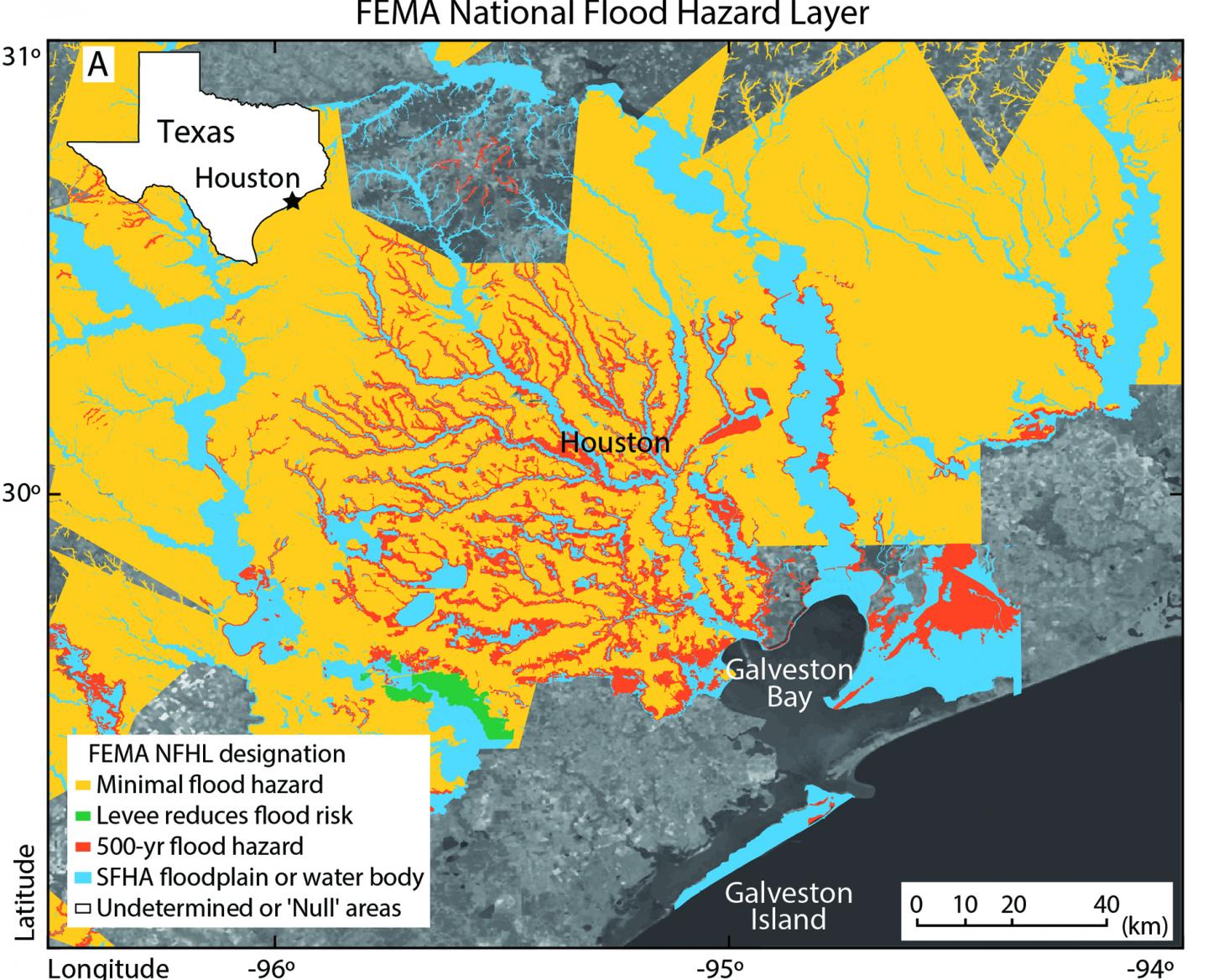ASU scientists use satellite data to map the Houston-Galveston area impacted by Hurricane Harvey

Credit: Megan Miller
Hurricane Harvey made landfall on Aug. 25, 2017, then stalled over Texas for three days as a tropical storm. The category-four storm claimed 80 lives, displaced multitudes of people, and damaged more than 80,000 homes.
ASU researcher Manoochehr Shirzaei of the School of Earth and Space Exploration and former graduate student and lead author Megan Miller (now a postdoctoral researcher at the Jet Propulsion Laboratory, California Institute of Technology) used satellite data to map the Houston-Galveston area impacted by Hurricane Harvey to understand why the flooding was so severe and widespread. The results of their study have been recently published in the journal Remote Sensing of Environment.
Mapping Eastern Texas with satellites and radar
For their study, Miller and Shirzaei mapped the Eastern Texas area of Houston-Galveston impacted by Hurricane Harvey using satellite radar data collected from the European Space Agency’s Sentinel-1 A/B satellites and Japan Aerospace Exploration Agency’s Advanced Land Observing Satellite. From this data, Miller and Shirzaei then compiled a snapshot of the extent of standing water in the area following the hurricane.
They also measured land subsidence (how much the land surface moves downward) for the area before the storm using space-borne Interferometric Synthetic Aperture Radar (InSAR), a radar technique used to generate maps of surface deformation using differences in the phase of the waves returning to the satellite. The technique can measure millimeter-scale changes in deformation over spans of days to years.
“Earth-orbiting radar satellites provide us with an opportunity to map areas when other techniques fail due to cloud coverage and lack of ground access to the area of the disaster,” says Miller.
In analyzing the satellite data, Miller and Shirzaei were surprised to see that large flooded areas fell outside the Federal Emergency Management Agency (FEMA) designated 500-year flood zones. “This highlights the need for revising both flood hazard zone maps and flood resilience plans in coastal regions,” warns Shirzaei.
Through this analysis, they found land subsidence in the Houston-Galveston area of more than 0.19 inches (5 millimeters) per year in 85 percent of the flooded area. The likely causes of subsidence include compaction of sediments, groundwater extraction and hydrocarbon production.
They concluded that the area’s subsidence affected flood severity by modifying base flood elevations and topographic gradients. “Ongoing land subsidence across the Houston area possibly lowered the flood control structures and changed floodplain boundaries and base flood drainage, which further intensified flooding,” says Shirzaei.
Flood Resilience Strategies
“In an era of climate change, weather extremes are becoming more frequent and intense,” adds Shirzaei. “The combination of extreme rainfall and ground conditions are causing unprecedented flood events not only in coastal areas like Houston-Galveston, but also in Midwestern states where farmers have experienced damage to livestock and agriculture, stretching from Illinois to Louisiana.”
While risk classification maps used by FEMA provide flood hazard data, this study shows that land elevation and slope are changing rapidly and these maps may need to be updated more frequently to account for such changes.
Also, land subsidence lowers coastal lands and makes them more vulnerable to flooding due to sea level rise and storm surges.
“The lessons learned from the floods following Hurricane Harvey highlight the major shortcomings of current flood resilience plans,” says Shirzaei. “We encourage stakeholders and regulators to use these findings to update hazard maps and improve flood resiliency plans accordingly to decide what precautionary measures are needed for their communities.”
On the horizon, Shirzaei and his research team are using the same satellite data techniques used in this study to focus on the Spring 2019 flooding that has devastated Midwestern states. They will be looking specifically at the impact of flooding on agriculture crop health and the local population. They hope to be able to provide recommendations on updating maps and resiliency plans to help these areas in the future.
###
About Arizona State University
Arizona State University has developed a new model for the American Research University, creating an institution that is committed to access, excellence and impact. ASU measures itself by those it includes, not by those it excludes. As the prototype for a New American University, ASU pursues research that contributes to the public good, and ASU assumes major responsibility for the economic, social and cultural vitality of the communities that surround it.
Media Contact
Karin Valentine
[email protected]
Original Source
https:/
Related Journal Article
http://dx.




